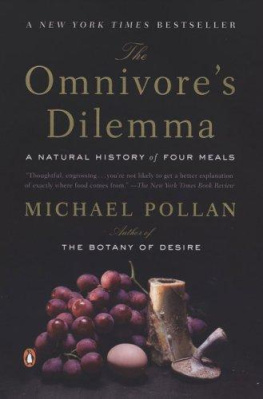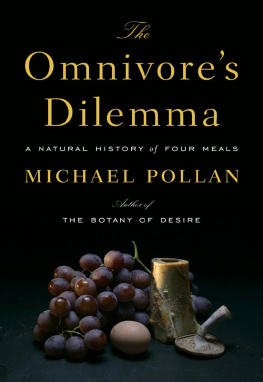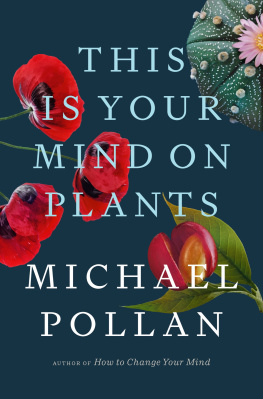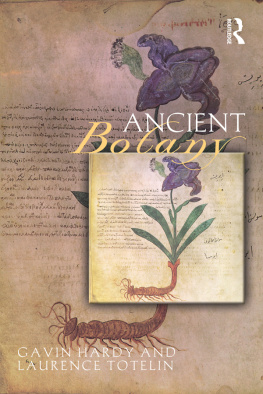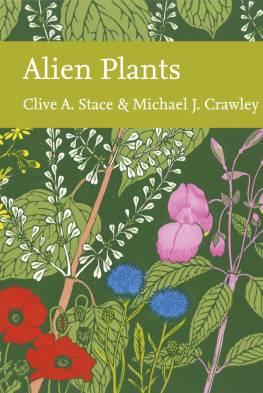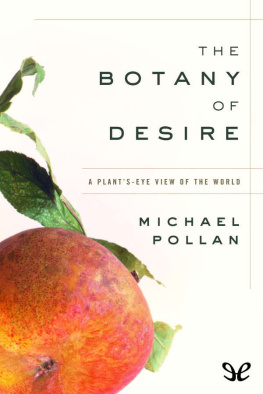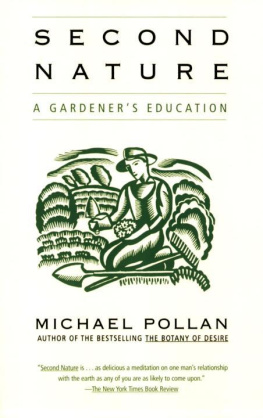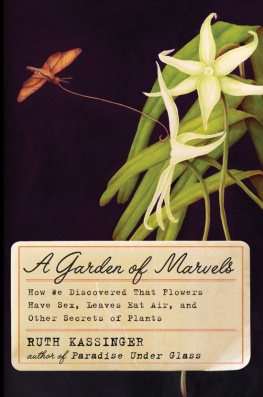
ALSO BY MICHAEL POLLAN
Second Nature: A Gardeners Education
A Place of My Own: The Education of an Amateur Builder
THE
BOTANY
OF
DESIRE
Michael Pollan

RANDOM HOUSE
NEW YORK
CONTENTS
To a marijuana grower, Amsterdam in the 1990s was something like what Paris in the 1920s was to a writer: a place where alienated expatriates could go to practice their craft in peace and hook up with a community of kindred souls. Growing marijuana is not precisely legal in Holland, but several hundred coffee shops are licensed to sell it, and small-scale growing to supply those shops is officially tolerated. Beginning in the late 1980s, as the United States escalated its campaign against marijuana, American refugees from the drug war began moving to Amsterdam. Growers took with them their seeds and expertise, and this migration, matched with a Dutch genius for horticulture going back to the tulip craze, made Amsterdam, once again, the place to go if you cared deeply about one particular plant.
I went to Amsterdam to learn about the recent history of marijuana in America and to seeokay, and samplewhat these gardeners had wrought in the years since my hasty retirement. I arrived in late November, at the time of the Cannabis Cup, an annual convention and harvest fair (sponsored by High Times magazine) that attracts many of the brighter lights in the field. American growers come to the Cup to do what gardeners always do when they gather in the off-season: swap seeds and stories and new techniques and show off their prize specimens. Some of the pioneers of modern marijuana growing were on hand, and I found that if I approached them as a fellow gardener, they were more than happy to share their experiences and knowledge.
Within a few days I had begun to piece together the story of how American gardeners, operating in the shadow of a ferocious drug war without benefit of professional training, had managed to transform homegrowna derisive 1970s term for third-rate domestic marijuanainto what is today the most prized and expensive flower in the world. But while the ingenuity and resourcefulness of growers had much to do with this success story, so did the ingenuity and resourcefulness of the plant itself. From the plants perspective, the American drug war presented an opportunity to expand its range into North America, where it had never had much of a presence. (Except, that is, as hemp, a distinct, nonpsychoactive form of cannabis widely grown for its fibers before prohibition.) To succeed in North America, cannabis had to do two things: it had to prove it could gratify a human desire so brilliantly that people would take extraordinary risks to cultivate it, and it had to find the right combination of genes to adapt to a most peculiar and thoroughly artificial new environment. This is the story of how that happened.
Most of the marijuana smoked in America was grown in Mexico until the mid-1970s, when the Mexican government, at the behest of the United States, began spraying the crop with the herbicide paraquat. About the same time, the U.S. government began cracking down on pot smugglers. With foreign supplies contracting and the safety of Mexican marijuana in doubt, a large market for domestically grown marijuana suddenly opened up. In a sense, the rapid emergence of a domestic marijuana industry represents a triumph of protectionism.
In the beginning, domestic marijuana was grossly inferior to the imported product. Part of the problem was that most early growers did what I did: plant seeds picked out of pot that had been grown in tropical places. Invariably these were the seeds of Cannabis sativa, an equatorial species poorly adapted to life in the northern latitudes. Sativa cant withstand frost and, as I discovered, usually wont set flowers north of the thirtieth parallel. Working with such seeds, growers found it difficult to produce a high-quality domestic crop (and especially sinsemilla) outside places such as California and Hawaii.
The search was on for a type of marijuana that would flourish, and flower, farther north, and by the end of the decade, it had been found. American hippies traveling the hashish trail through Afghanistan returned with seeds of Cannabis indica, a stout, frost-tolerant species that had been grown for centuries by hashish producers in the mountains of central Asia. The species looks quite unlike the familiar marijuana plant (a distinct advantage to its early growers): it rarely grows taller than four or five feet (as compared to fifteen for the stateliest sativas), and its purplish green leaves are shorter and rounder than the long, slender fingers of sativa. Indica also proved to be exceptionally potent, although many people will tell you that its smoke is harsher and its high more physically debilitating than that of sativa. Even so, the introduction of indica to America proved a boon, since it allowed growers in all fifty states to cultivate sinsemilla for the first time. Some indicas will flower reliably as far north as Alaska.
Initially, indicas were grown by themselves. But enterprising growers soon discovered that by crossing the new species with Cannabis sativa, it was possible to produce vigorous hybrids that would combine the most desirable traits of each plant while downplaying its worst. The smoother taste and clear, belllike high associated with the best equatorial sativas, for example, could be combined with the superior potency and hardiness of an indica. The result was what Robert Connell Clarke, a marijuana botanist I met in Amsterdam, calls the great revolution in cannabis genetics.
In a wave of innovative breeding performed around 1980, most of it by amateurs working in California and the Pacific Northwest, the modern American marijuana plant was born. Even today the sativa X indica hybrids developed during this periodincluding Northern Lights, Skunk #1, Big Bud, and California Orangeare regarded as the benchmarks of modern marijuana breeding; they remain the principal genetic lines with which most subsequent breeders have worked. Nowadays American cannabis genetics are widely regarded as the worlds best; they are the basis of the thriving cannabis seed trade in Holland, as the American growers I met there were quick to point out. Yet without the Dutch to safeguard and disseminate these strains, the important genetic work done by American breeders would probably have been lost by now, scattered to the winds by the drug war.
Until the early 1980s, almost all the marijuana grown in America was grown outdoors: in the hills of Californias Humboldt County, in the cornfields of the farm belt (cannabis and corn thrive under similar conditions), in backyards just about everywhereand a lot more of it than anybody realized. In 1982 the Reagan administration was chagrined to discover that the amount of domestic marijuana being seized was actually a third higher than its official estimate of the total American crop. Shortly thereafter, the administration launched an ambitious nationwide programenlisting local law enforcement agencies and, for the first time, the armed forcesto crush the domestic marijuana industry.
Though the governments campaign failed to eradicate marijuana farming, it did change the rules of the game, forcing both the plant and its growers to adapt: The government pushed us all indoors, a grower from Indiana told me. And it was there, under the blazing metal halide lights, that
Next page


